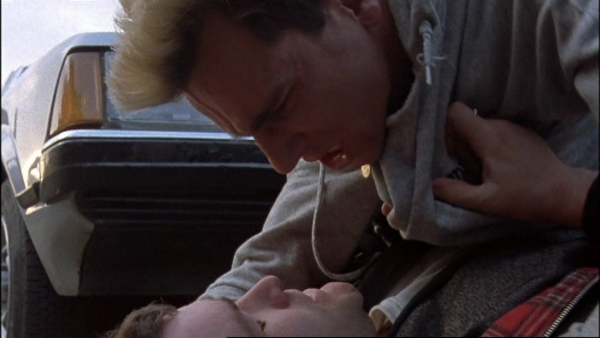
“ … The Purple Rose of Cairo ist der 13. Film, bei dem Woody Allen als Regisseur tätig war. Die 1985 entstandene Filmkomödie spielt im Amerika zur Zeit der großen Depression der 1930er Jahre und erzählt vom Leben der Kellnerin Cecilia. … Die sensible Kellnerin Cecilia ist unglücklich mit ihrem Leben und ihrer Ehe mit dem grobschlächtigen, primitiven Arbeiter Monk. Sie flüchtet sich in die Phantasiewelt des Kinos. Ihr Lieblingsfilm ist „The Purple Rose of Cairo“, in dem der Schauspieler Gil Shepherd den Abenteurer Tom Baxter spielt. … Die Filmfigur Baxter durchbricht eines Tages die vierte Wand und spricht die entsetzte Cecilia direkt an. Baxter verlässt die Leinwand und steht vor Cecilia. Beide verlieben sich ineinander. Der Vorfall hat jedoch Folgen: Die restlichen Filmfiguren können den Film nicht zu Ende spielen und sind jetzt auf der Leinwand gefangen. …“ | https://de.wikipedia.org/wiki/The_Purple_Rose_of_Cairo
–
CINEMATICITY (‚Woody Allen’s The Purple Rose of Cairo and The Reality of Cinematic Dreams‘): “ … The film is [ ] about the fantasy of the cinema, the allure of the fictions it portrays, and the willingness to live life according to them, to abandon the difficulties of life at the moment the possibility to do so presents itself and to live the life of one’s dreams. But it’s a film about the separation between real dreams from false dreams, about the difference between the love of a movie character and that of the real-life character that plays him. And the film is also about the reality of dreams themselves, of the difference between the perception of the cinematic in our lives, their real-life potential and their illusory, fickle nature, how they abandon us without cause or reason and leave us once again resigned to our grim reality. …“ | http://www.cinematicity.org/woody-allens-the-purple-rose-of-cairo/



Kommentare